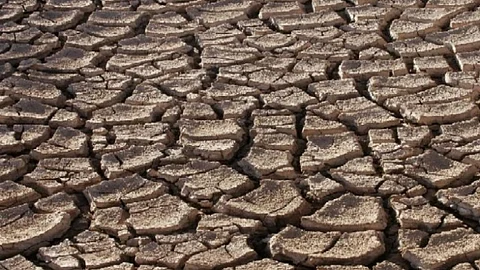
- Topics
- Feature
- Opportunities & Events
- Data
- Hindi Portal
- Topics
- Feature
- Opportunities & Events
- Data
- Hindi Portal

India is witnessing the second driest pre-monsoon season in the last 65 years. As the country eagerly eyes the monsoon clouds, the delay so far has now widened the rain deficit to 43%. The situation is particularly grim in the north-western region of Gujarat and Maharashtra and the southern states of Kerala, Andhra Pradesh, and Tamil Nadu.
This increasing rain deficit is causing tremendous hardships to farmers, with the agricultural sector already facing a deepening crisis. What do farmers do to cope with droughts in such times of crisis? Are they able to cope with droughts effectively, or at all?
This paper Rainfall uncertainty and drought proofing strategies by farmers in Southern India published in the International Journal of Civil, Environmental and Agricultural Engineering presents the findings of a study that explores the measures undertaken by farmers from drought stricken districts of Tamil Nadu and Karnataka during the drought of 2015-16 and the effectiveness of these measures. Farmers from two districts namely, Coimbatore and Tirupur of Tamil Nadu and Tumkur and Bijapur of Karnataka have been interviewed for the study.
Here are some interesting highlights from the study.
Variation in rainfall is the key factor contributing to droughts and this unpredictability has forced farmers to stop depending on rains for farming and turn to borewells that are now used as the primary source of irrigation. Majority of farmers (67%) invest in bore wells followed by drip irrigation methods to conserve this water. Borewell depths range from 700 feet to as deep as 1000 feet. Further, the rate of well failure is very high with farmers digging deeper and deeper in desperate hopes of saving their standing crops. This has created a booming market for well drilling machines and the annual burden of well investment has been found to range from Rs.18,500 to Rs.52,500 per farm.
Groundwater levels have become precariously low in the areas and many farmers have been experiencing a significant reduction the pumping hours of the borewells from 7 hours/day to 1 or 2 hours/day.
Around 20% of farmers follow the traditional flood irrigation method but reduce the quantum of water they normally use to irrigate. Others fallow the fields as the wells have dried up, while some farmers have adopted organic farming along with drip irrigation and mulching. Some farmers also resort to buying water from urban areas through tankers. The cost of water from tankers ranges between Rs.1,500 and Rs.2,000 for 12,000 litres (Rs.125 to Rs.150/m3). It requires about 4 trips to provide one irrigation for one acre of coconut trees.
Less water availability has led to reduction in irrigated area to almost one third of the total farm area. Even with drip irrigation, there has been only a marginal increase in irrigated area and farmers have been found to experience difficulties in allocating water among the standing perennial crops such as coconut, arecanut, sugarcane and banana. Farmers who grow only seasonal crops like vegetables have reduced the area under cultivation to one-fourth of the farm area.
Farmers have adopted some demand management measures to cope with the drought situation. While 80% of the farmers use drip systems, many of them (60%) have not availed any subsidies and invested in drip irrigation mainly due to acute water scarcity. Drip irrigation has reduced the water need for fruits such as grapes and pomegranate and other crops such as sugarcane, onion, maize and tomato respectively to some extent. Plastic and organic mulches are used by farmers to minimise evaporation losses that also helps to save water.
A cost based analysis of different methods of drought proofing shows that although borewells appear to be relatively cost effective as compared to some other methods, the high rate of failure of the borewells due to the free power policy and overpumping increases the groundwater cost. It also causes irreversible damage to the groundwater in the area calling for the need to limit the use of borewells as the main source of water for irrigation.
Recharging existing bore wells and investing in percolation ponds are the most cost effective methods for drought proofing, while demand management measures like adoption of drip irrigation cost relatively less compared to options like tanker water purchase. However, the use of drip irrigation does not provide any additional advantage in a situation where the challenge of inadequate water supplies from bore wells remains.
The paper suggests:
The paper can be accessed at this link